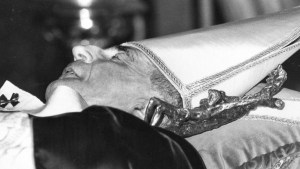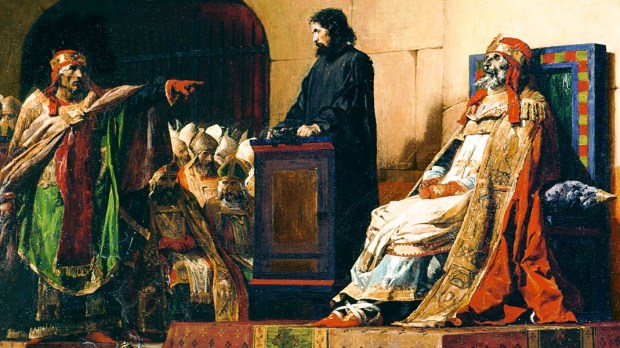Threatening messages and attacks on Catholic churches in Chile led authorities to review security measures for the pope’s visit this week to his home continent. But despite such tension, Francis is likely in a much safer predicament than a good number of his predecessors.
Indeed, John Paul II survived a very close call in 1981. But no pope has been murdered in many, many years (unless one believes in a conspiracy theory involving John Paul I’s death in 1978). There was a time, however, when the papacy was perhaps the most perilous position on earth. In fact, the 10th century alone saw a minimum of five papal murders.

Read more:
1st public interview: Nun who helped John Paul I tells of his peaceful death
Such violence was the result of a turbulent political climate, in which one prominent family would appoint a pope, who would then be deposed – or murdered – by someone acting on behalf of a rival family. Popes who survived often had to spend considerable time away from Rome, waiting for hostilities to boil over or subside.
Of course, murder claimed the first pope, Peter, who was crucified (upside-down, according to many) in the year 64. It’s likely that at least some of the earliest popes died violently, though available information is very sketchy. A bit more is known about the fate of Sixtus II, who was decapitated in 258 by imperial Roman troops under order to execute Church officials. Fortunately, the 312 conversion to Christianity of Roman emperor Constantine would prove favorable to papal life expectancies – for more than five and a half centuries.
But as the 9th century approached its end, the papacy had once again become fraught with peril. In 882, John VIII was poisoned by mutinous members of his inner circle. Growing impatient while waiting for the poison to take effect, they chose to expedite the assassination by clubbing him to death.
Animosities were perhaps even more intense during the brief tenure of Stephen VI, who conducted a ghastly 897 affair known as the Cadaver Synod, in which the corpse of Pope Formosus was exhumed, adorned in papal vestments, and then put on trial. This “trial” convicted Formosus of having been an illegitimate pontiff, and his remains were then thrown into the Tiber River. The grisly spectacle of the Cadaver Synod outraged many. And not long after its conclusion, Stephen VI, who’d presided over the Synod, was found strangled.
Though John X did not elicit such public outrage, he fell on the bad side of Marozia, a daughter of the immensely powerful Theophylacti family. She had him incarcerated in Rome’s Castel Sant’Angelo, where he was found suffocated in 929.
John XII became pope in 955, while still a teenager. He proceeded to act more like a frat boy than a pontiff. Some suspect he was killed by a jealous husband in 964, though others say he suffered a fatal stroke while in the embrace of a mistress.
Benedict VI ran afoul of the prominent Crescentii family. In 974, he was imprisoned and strangled – by a priest. Another Crescentii victim was John XIV. In 984, he was murdered in captivity; some say poison was the method used, while others say he was starved to death.
Gregory V, the first German pope, died in 999. Though malaria is given as the probable cause, the violence and conspiracy during his tenure led to rumors that he was poisoned.
There is less ambiguity about the demise of Boniface VIII, a very bright but hot-tempered pontiff who, starting in 1296, became embroiled in a bitter power struggle with the French monarchy. Held captive in France during a 1303 visit, he was subjected to severe physical abuse, from which he never recovered, as he died shortly after returning to Rome.
Because death occurred so soon after his abusive captivity, he was essentially murdered. Boniface’s 1303 demise marks the last known incidence of a papal death from causes other than natural.
In the cases of some papal deaths – Adrian III in 885, Leo V in 903, Stephen VII (or VIII) in 931, Sergius IV in 1012, and Damasus II in 1048 – we are not certain they were murdered, but they died under suspicious circumstances in an era when the papacy was a tenuous position and being a pope was a truly dangerous calling.

